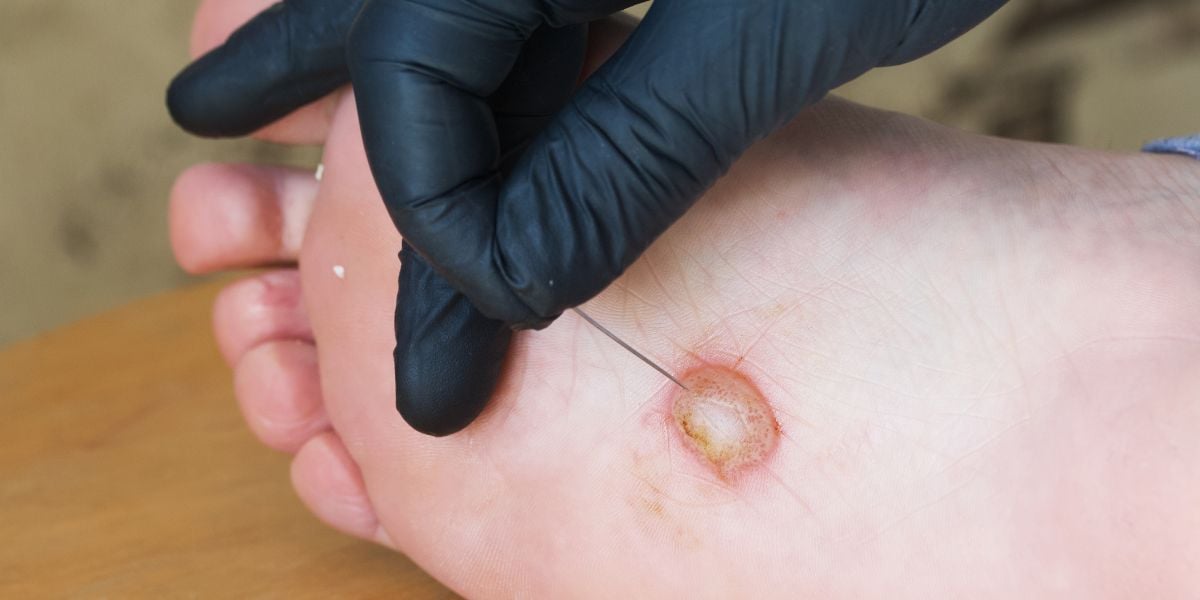Diabetes is a chronic condition which can trigger a number of complications. It affects over one-quarter of American senior citizens. A worrying statistic suggests that 10 to 15 percent of individuals with diabetes experience the frightening danger of foot and leg ulcers. These seemingly innocuous wounds, if left unattended, may escalate to a point where diabetic foot amputation becomes an unfortunate reality. In reality, more than 80 percent of the amputations result from foot ulcers, highlighting the necessity of taking care to provide medical attention and preventive measures.
The treatment of diabetes is a challenging problem that goes well beyond the control of glucose. This is why regular foot care is an essential factor in preventing the risk of complications related to diabetes.

Understanding the Landscape
The diabetes world and the complications it brings is a complex one. Patients suffering from diabetes are more likely to develop leg and foot ulcers. This highlights the importance of proactive care and more awareness. Given the stark statistics, it becomes clear that the best way to stop amputations from happening is to build a better understanding.
The Amputation Conundrum
The fear of an amputation casts a long shadow over those grappling with diabetes. It’s much more than an occurrence. It affects individuals personally. From minor injuries to the prospect that a diabetic foot could need to be amputated It’s a path of intense trauma.
Daily Footcare: A Shield to Amputation
The basis of diabetes prevention of amputations lies in regular foot treatment. This routine isn’t just about maintaining hygiene; it’s an exacting method of identifying and solving potential issues before they escalate. This routine every day includes everything from examining your feet for any wounds to applying the proper moisturizing.
The Function of Vascular Specialists
While vascular specialists may not directly control diabetes however their expertise plays a pivotal role in reducing the problems that are associated with the disease. In order to alleviate discomfort in the legs and aid in healing of wounds, establishing optimum circulation of blood is an important element of treatment. This collaboration approach is geared towards achieving one goal in reducing the risk of amputations caused by diabetes.
Amputation Prevention Strategies
To make it through the dangers of amputation due to diabetes, you need a combination awareness, vigilance and expert intervention. It is essential for those with diabetes. Regular check-ups with healthcare professionals including vascular specialists contribute to early detection and intervention.
Leg Ulcers Understanding the Triggers
Leg ulcers, which are often precursors to more severe complications, require care and knowledge. Understanding the triggers that cause leg ulcers is a critical step. Determining the cause of the problem, whether it’s poor circulation, neuropathy, or an amalgamation, allows for specific and targeted treatment.
Education as Empowerment
It is essential to educate those with diabetes about the risks as well as the preventative measures. Initiatives to educate healthcare professionals as well as in the larger public can help bridge the knowledge gap. Being aware of the ramifications of seemingly innocuous wounds can initiate prompt action, possibly stopping the necessity for diabetic foot amputation.
Private Battles or Collective Triumphs
Combating the complications of diabetes isn’t an individual struggle; it is a collective victory. Joining support groups through your healthcare provider or in your local community can be an excellent means to exchange experiences, gain insights and learn coping techniques. The emotional impact of the risk of amputation is enormous, and a sense of belonging can provide solace and strength.
Conclusion: The battle against ulcers, diabetes and the risk of amputation are many-faceted. Foot care should be the top priority, however the expertise of a vascular specialist is essential in preventing complications. By fostering awareness, embracing preventive measures and creating a collective support system, those with diabetes can traverse this intricate landscape with resilience and optimism, diminishing the risk of amputations.